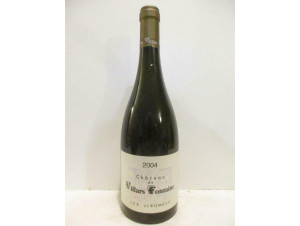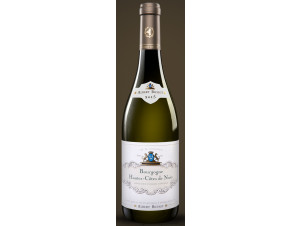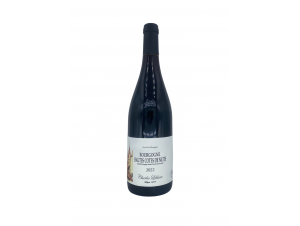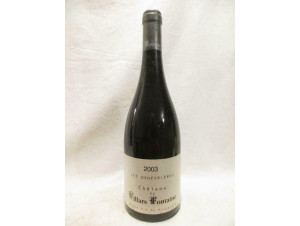You have no items in your shopping cart.
Wine Burgundy-Hautes-Côtes-de-Nuits
The geographical name "Haute Côtes de Nuits" refers to the vineyard located to the west of the Côte d'Or. Spread over 21 communes, this vineyard has demonstrated to every wine lover its ability to produce quality wines from the traditional Burgundian grape varieties. Read more on Burgundy-Hautes-Côtes-de-Nuits
-
Top Selling-25%
-
Top Selling-25%
-
Top Selling
Appellation Burgundy-Hautes-Côtes-de-Nuits
The Hautes-Côtes-de-Nuits vineyards produce quality wines
Burgundian wine history begins in the Gallo-Roman period after the ban on planting vines was lifted in 281 AD. In the Middle Ages, the ecclesiastical structures and the nobility will have a major role in the economic development of the Burgundian vineyard. They also marketed it under the name "Beaune wines". Until the 15th century, the Burgundian duchy extended from Mâcon to Amsterdam, which greatly facilitated the trade of its wines.
In the 18th century, the development of trade in the towns of Beaune and Nuits-Saint-Georges gave a new impetus to the wine trade.
It was in the 19th century that the viticultural history of the wines of Hautes Côtes de Nuits, until then on the fringes of economic development, really began. Renowned in 1180 for their quality wines, the discovery of the Gamay was to encourage winegrowers to plant it in place of the Pinot Noir, until then the only Burgundian variety. The planting of this grape variety will lead the producers of the Hautes Cotes to vinify ordinary consumption wine which will replace the southern wines, during the phylloxera crisis. They will thus experience a strong growth in terms of surface area and economy. In 1878, phylloxera hit the vineyards of Burgundy.
The reconstruction of the vineyard began in 1892 to reach its peak in 1910. However, the crisis of overproduction put a strain on the vineyards whose production was intended for ordinary consumption. Faced with this situation, the winegrowers replanted pinot noir, the grape variety of the great red wines of the coast. This was not enough for the Dijon court to authorise them to use the appellation "Burgundy" in 1930 (officially recognised by the INAO in 1937), since at that time the majority grape variety of the Hautes Côtes was still Gamay. The economic crisis did not help matters as the wines of this geographical area were difficult to sell.
It is currently a vintage vineyard because it allows the winegrowers of the coast to expand, something that is no longer possible on the AOCs of the coast arrived at saturation. In addition, many wine lovers recognise the quality of its wines, which are still very affordable.
The Hautes-Côtes-de-Nuits: same geology as the coast but different climate
"Hautes Côtes de Nuits" is a geographical name that has been possible to add to the AOC Bourgogne since 1961. The Hautes Côtes de Nuits production area covers 21 communes (Arcenant, Bévy, Chaux, Chevannes, Collonges-lès-Bévy, Concoeur, Corboin, Curtil-Vergy, l'Etang- Vergy, Magny-lès-Villers, Marey-lès-Fussey, Messanges, Meuilley, Reulle-Vergy, Segrois, Villars-Fontaine and Villers-la-Faye, as well as the parts of the bordering territory delimited on the communes of Chambolle-Musigny, Flagey-Echezeaux, Nuits-Saint-Georges and Premeaux-Prissey. ), on the heights of Gevrey-Chambertin up to Corton.
The vineyard of this denomination is situated between 300 and 400 m of altitude, delimited in the west by the relief of the coast and in the east by the valley of Ouche. The geological substratum is identical to that of the neighbouring vineyard, it is Jurassic limestone. The soils are clay-limestone due to the alteration of the bedrock.
The climate here is cool oceanic with continental influences more marked in autumn and winter than on the coast. Winters are harsh with periods of frost and snow. Southern influences are weaker than on the coast but are felt in spring and summer. Summer temperatures remain low, especially for the maximum temperatures, which explains the one-week delay in the harvest period. Two thirds of the vineyard is planted with high vines, and those in particular for thermal reasons.
The Pinot Noir and Chardonnay grape varieties obviously play their role as headliners but for the vinification of white wines a blend with Pinot Blanc is authorised just as for rosé wines a blend of Pinot Noir and Pinot Gris is authorised.
The organoleptic characteristics of Hautes-Côtes-de-Nuits
The white wines of the Hautes-Côtes have a beautiful ageing potential that varies from 2 to 8 years. The colour is golden. The nose is floral with notes of hawthorn, honeysuckle, nettles but it also has notes of apple, lemon and hazelnut. The palate is balanced, structured with a slight fatness.
The red wines are wines for laying down (3 to 10 years). The colour is purple-red. The nose has notes of red fruits such as cherry and raspberry. There are spicy notes such as liquorice and floral notes. The palate is structured, the tannins are present and the aromatic return powerful.
With what foods to enjoy a Hautes-Côtes-de-Nuits?
The white wines go well with regional dishes such as marbled ham or snails. They are also suitable for tarama, steamed fish or shellfish. The fatness of these wines allows them to be matched with chaource, ripened comté or roquefort. For the less conventional, a match with foie gras may surprise you, but wait until the wine has aged a few years.
Red wines will suit white meats and also more savoury meats like lamb or duck. Daring sweet and savoury dishes will also suit them well. Their pairing with a creamy cheese platter is a must.
The fine vintages of Hautes-Côtes-de-Nuits
The great vintages known recently for Hautes Côtes de Nuits white wines are 2002, 2004, 2005, 2006, 2010, 2012, 2014, 2015, 2016, 2017 and 2018.
Recently known high quality vintages for Hautes Côtes de Nuits red wines are 2003, 2005, 2007, 2009, 2010, 2014 and 2015.
High Côtes-de-Nuits estates to discover
Many of the domains on the Côte de Nuits have plots on the Hautes-Côtes and produce quality wines, including Domaine Mongeard-Mugneret, Domaine François Lamarche, Domaine Faiveley and many others.
The opposite is rarer but it does exist, the Domaine David Duband is proof of this. Located in Chevannes in the heart of the Hautes Côtes de Nuits, this domain exploits 17 ha on its own, completed by the purchase of grapes from winegrowers in the region. Their vineyards, as well as those of their collaborators, are cultivated according to the principles of organic farming. The objective of the estate is to obtain great Burgundy wines that express the complexity of their terroir both on the prestigious terroirs of Chambolle-Musigny, Morey-Saint-Denis, Nuits-Saint-Georges, Vosne-Romanée and on the terroirs of the Hautes-Côtes-Nuits.
The Domaine Hoffeman-Jayer inspired David Duband. Robert Jayer, father of Gilles Jayer, was David Duband's mentor. Based in Magny-lès-Villers, it was in 1970 that the history of the estate became exclusively winegrowing and the excellence of the wines was recognised. Robert's work was continued by Gilles Jayer and the reputation and excellence of the wines only grew. A pioneer in the development of the terroirs of the Hautes Côtes de nuits and Hautes Côtes de Beaune, he has the will to respect the environment, first by applying a reasoned viticulture and then by going further in the process of respecting the environment, the soils and the plant. Currently taken over by André Hoffeman, the estate continues Gilles Jayer's philosophy.































 TWIL - Achat de Vin
TWIL - Achat de Vin


